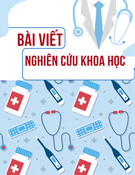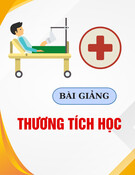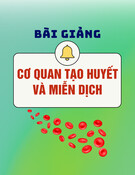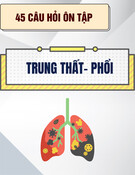
Can Tho Journal of Medicine and Pharmacy 10(7) (2024)
78
RESEARCH ON CLINICAL CHARACTERISTICS AND TREATMENT
RESULTS OF DERMATOPHYTOSIS PATIENTS WITH THE
COMBINATION OF TOPICAL TERBINAFINE AND ORAL
ITRACONAZOLE
Lac Thi Kim Ngan*, Nguyen Hai Dang, Pham Thanh Thao, Tran Gia Hung
Can Tho University of Medicine and Pharmacy
*Corresponding author: ltkngan@ctump.edu.vn
Received:26/02/2024
Reviewed:09/05/2024
Accepted: 12/05/2024
ABSTRACT
Background: Currently, many patients with dermatophytosis are treated with a variety of
antifungal drugs but they are ineffective and relapses are common. Many antifungal drugs have
been used but fails to treat the disease, which can globally become an issue in medical practice. The
combination of antifungal drugs for the treatment of dermatophytosis, including oral itraconazole
and topical terbinafine, has been shown to be more effective than monotherapy. However there has
not been much research on the effectiveness of this combination treating dermatophytosis in
Vietnam. Objectives: To describe the clinical characteristics and evaluate the results of patients
with dermatophytosis treated with the combination of oral itraconazole and topical terbinafine at
Can Tho Hospital of Dermato-Venereology in 2023. Materials and methods: a cross-sectional
descriptive study was conducted on 53 patients who were diagnosed with dermatophytosis at Can
Tho Hospital of Dermato-Venereology from May to November 2023. Results: the age group of 16 –
30 years old (47.2%) and male gender (67.9%) were the most common. The dominant clinical
characteristics were pruritus (96.2%), erythema (100%), scaling (90.6%), central skin atrophy
(88.7%), tinea corporis (90.6%), tinea cruris (28.3%), polycyclic pattern (79.2%) and round pattern
(71.7%). The severity scores of the three symptoms and signs (pruritus, erythema and scaling) at
the second week and fourth week were significantly decreased, compared with their baseline values
(p<0.001). The cure rate of the patients after the second and fourth weeks of treatment were 28.3%
and 90.6% respectively. Conclusion: pruritus, erythema, scaling, central skin atrophy, tinea
corporis, tinea cruris, polycyclic pattern and round pattern were the most common clinical
characteristics in dermatophytosis. With the treatment that combined of topical terbinafine and oral
itraconazole, symptoms of the disease were significantly reduced.
Keywords: dermatophytosis, itraconazole, terbinafine, clinical characteristics, treatment results






























